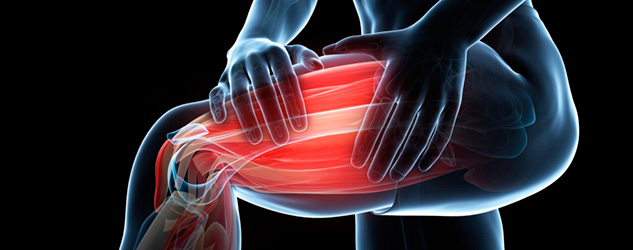
photo credit: Getty Images

photo credit: Getty Images
Eccentric-only training is often used for athletes because it leads to preferential increases in eccentric strength. After a program of eccentric-only training, eccentric 1RM increases more than concentric 1RM.
These increases in eccentric-specific strength are valuable because they help improve the ability to decelerate (and therefore change direction more quickly), and they increase the energy absorption capacity of a muscle, which is likely what reduces muscle strain injury risk.
However, eccentric-only training is also renowned for causing high levels of muscle damage and muscle soreness in most people.
Fortunately, even within the context of eccentric-only training, several factors have been identified as leading to greater degrees of muscle damage, which can help strength coaches identify ways to manage it during training. The key factors are:
The maximal effort exerted during eccentric-only training lead to more post-workout muscle damage than sub-maximal efforts, even when total work done is matched.
Higher velocities during the maximal effort, eccentric-only training also increase post-workout muscle damage. This is probably because the force-velocity relationship is inverted in eccentric contractions, such that higher velocities involve greater forces.
Finishing an eccentric contraction at a long muscle length leads to more muscle damage than finishing it at a short muscle length, even when the total range of motion of the exercise is exactly the same.
Using a greater range of motion for an eccentric contraction leads to more muscle damage than a smaller range of motion, even when the finishing muscle length of the eccentric contraction, and the size of the force produced, are exactly the same.
Using a constant load (such as a free weight, body weight, or conventional machine) leads to greater muscle damage than using accommodating resistance or isokinetic resistance. This is probably because a constant load produces its peak force at the longest muscle length while accommodating resistance produces it in the middle of the overall range of motion.
Pulling that together, we can see that the three key factors that produce higher levels of muscle damage (and therefore likely muscle soreness) are: higher forces (either by higher levels of effort, higher eccentric velocities, or a constant load), longer muscle lengths, and longer ranges of motion.
Of course, using heavier loads, training through greater ranges of motion, and loading the stretched position in an exercise are each typically associated with greater strength gains (through various mechanisms), greater hypertrophy, and larger increases in muscle fascicle length.
Avoiding these factors completely is therefore probably not ideal, but introducing them gradually over the course of a training program that lasts several weeks will almost certainly reduce the amount of muscle damage (and therefore muscle soreness) that athletes experience.
Indeed, with a proper preparatory phase that builds up from a small volume and a light load, it is possible to perform eccentric-only training even in previously untrained individuals and not cause substantial degrees of muscle damage, and this does not interfere with the resulting adaptations.
Authored By:
Chris Beardsley graduated from Durham University with a Masters Degree in 2001. He since contributed to the fields of sports science and sports medicine by working alongside researchers from Team GB boxing, the School of Sport and Recreation at Auckland University of Technology, the Faculty of Sport at the University of Ljubljana, the Department of Sport at Staffordshire University, and the College of Health Solutions at Arizona State University. He is also a Director at Strength and Conditioning Research Limited